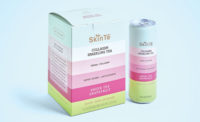Innovations in Paper Labels

As in nearly every industry, the business landscape has changed due to COVID-19. With many of us remaining home for work and life, web sales are up significantly and the advancement of e-commerce platforms and the proliferation of the customers who use them is placing ever increasing demands on the packaging industry. To respond to this explosion of consumer pressure, companies are in need of label technology that can cost-effectively handle this chaotic and fast-moving economy while also being mindful of waste.
Sustainability is an important topic for brands and converters, and this applies to paper, film, plastic and any product on the market. Pressure-sensitive labels play a big part in sustainability. Although over the years there has been a reduction in paper use, companies are still looking for ways to better enable recycling.
Material supply businesses have been concentrating on better liner technology, more efficient and cleaner dispensing, and recycling-enabled adhesives. At the same time, another trend within the paper product portfolio is the move to lower basis weight/thinner facestocks for cost and sustainability. These thinner and lighter materials enable more labels per roll, less production downtime, less storage and transportation. They can be used in a wide variety of applications and industries. Converters have found that thin label materials will help to improve operational efficiencies, reduce costs and reduce waste.
End users of labels such as suppliers to the grocery industry have had to adjust too. Products have been optimized for e-commerce order and pick-up entities that have seen increased business during the pandemic. Although the demand for many products has fallen from the start of the coronavirus, the new normal is still higher than previous levels of demand and consumption. Additionally, home care products are going to continue to be in high demand, while health care products are expected to level off.
For Avery Dennison, using sustainably sourced paper materials is a key initiative in order to pass benefits along to the customer and to the end user. One such product is the Direct Thermal (DT) Eco. Thinner than standard constructions typically used in hand-held, direct thermal printing applications, this product offers substantial benefits of reduced costs, increased productivity, and greater sustainability.
The benefits of using a thinner facestock are significant. Because it uses thinner components, a 20,000-foot roll has the same outer diameter and weight as a 15,000-foot roll of a standard product. This saves on shipping and handling costs across the supply chain. It allows converters to run longer quantities of the material with less frequent changeover, helping them increase productivity. With that 33% gain in labels per roll, end users have less downtime devoted to label roll changes.
Paper labels will continue to evolve and drive sustainable solutions — use of recycled content, the ability to recycle and compostable materials. The companies that will succeed will be those that can continue to adapt creatively to customer needs during and after coronavirus.
See the main Spotlight feature here: What Does Your Labeling Say.
Looking for a reprint of this article?
From high-res PDFs to custom plaques, order your copy today!






